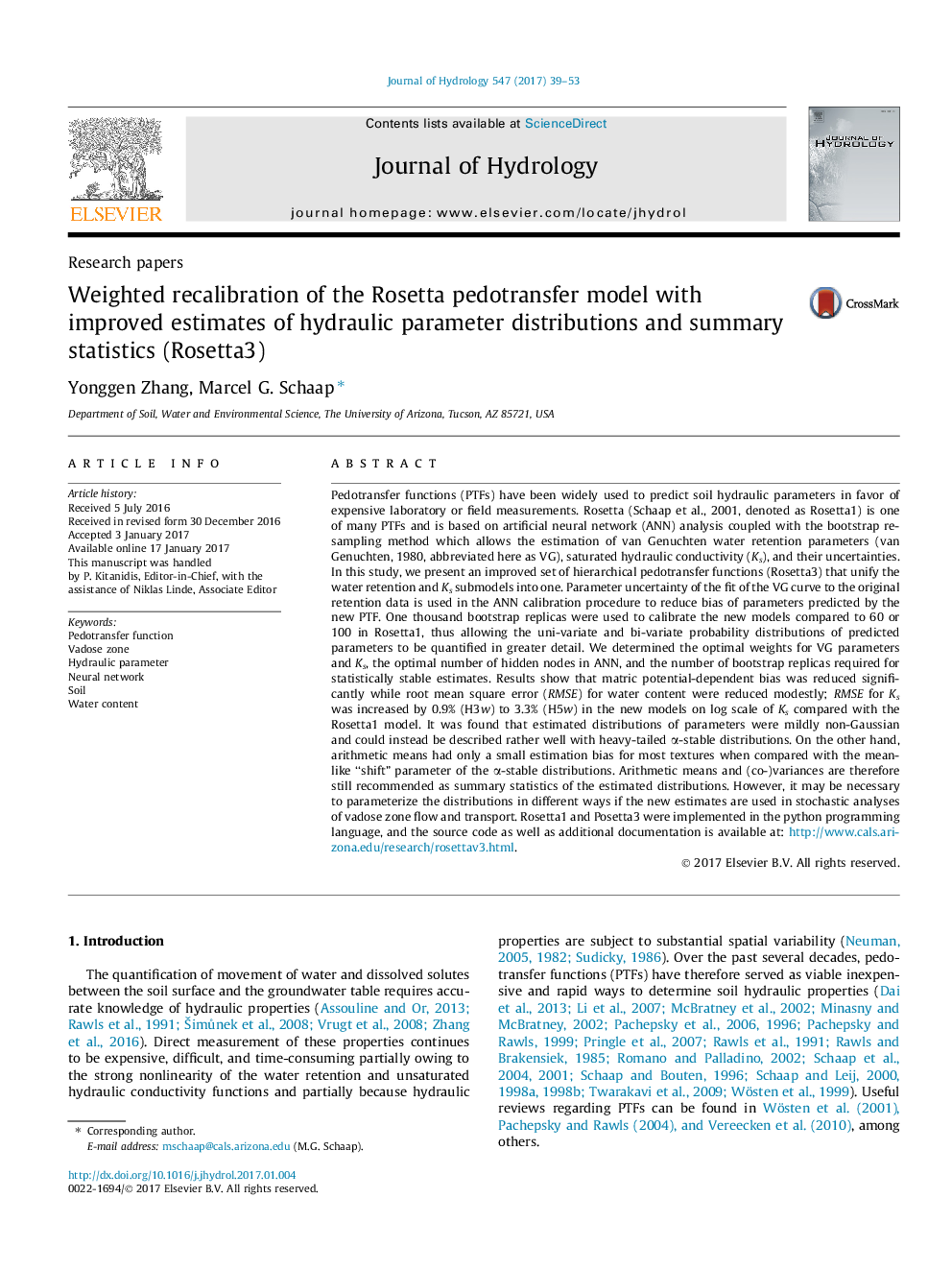| کد مقاله | کد نشریه | سال انتشار | مقاله انگلیسی | نسخه تمام متن |
|---|---|---|---|---|
| 5771028 | 1629907 | 2017 | 15 صفحه PDF | دانلود رایگان |

- An existing popular hierarchical set of pedotransfer functions was improved.
- A bootstrapped artificial neural network was calibrated using weighted input.
- The models have less bias and better performance in terms of observed quantities.
- The models estimate mildly non-Gaussian distributions of hydraulic parameters.
- The cross-platform python-based open source code is available online.
Pedotransfer functions (PTFs) have been widely used to predict soil hydraulic parameters in favor of expensive laboratory or field measurements. Rosetta (Schaap et al., 2001, denoted as Rosetta1) is one of many PTFs and is based on artificial neural network (ANN) analysis coupled with the bootstrap re-sampling method which allows the estimation of van Genuchten water retention parameters (van Genuchten, 1980, abbreviated here as VG), saturated hydraulic conductivity (Ks), and their uncertainties. In this study, we present an improved set of hierarchical pedotransfer functions (Rosetta3) that unify the water retention and Ks submodels into one. Parameter uncertainty of the fit of the VG curve to the original retention data is used in the ANN calibration procedure to reduce bias of parameters predicted by the new PTF. One thousand bootstrap replicas were used to calibrate the new models compared to 60 or 100 in Rosetta1, thus allowing the uni-variate and bi-variate probability distributions of predicted parameters to be quantified in greater detail. We determined the optimal weights for VG parameters and Ks, the optimal number of hidden nodes in ANN, and the number of bootstrap replicas required for statistically stable estimates. Results show that matric potential-dependent bias was reduced significantly while root mean square error (RMSE) for water content were reduced modestly; RMSE for Ks was increased by 0.9% (H3w) to 3.3% (H5w) in the new models on log scale of Ks compared with the Rosetta1 model. It was found that estimated distributions of parameters were mildly non-Gaussian and could instead be described rather well with heavy-tailed α-stable distributions. On the other hand, arithmetic means had only a small estimation bias for most textures when compared with the mean-like “shift” parameter of the α-stable distributions. Arithmetic means and (co-)variances are therefore still recommended as summary statistics of the estimated distributions. However, it may be necessary to parameterize the distributions in different ways if the new estimates are used in stochastic analyses of vadose zone flow and transport. Rosetta1 and Posetta3 were implemented in the python programming language, and the source code as well as additional documentation is available at: http://www.cals.arizona.edu/research/rosettav3.html.
Journal: Journal of Hydrology - Volume 547, April 2017, Pages 39-53